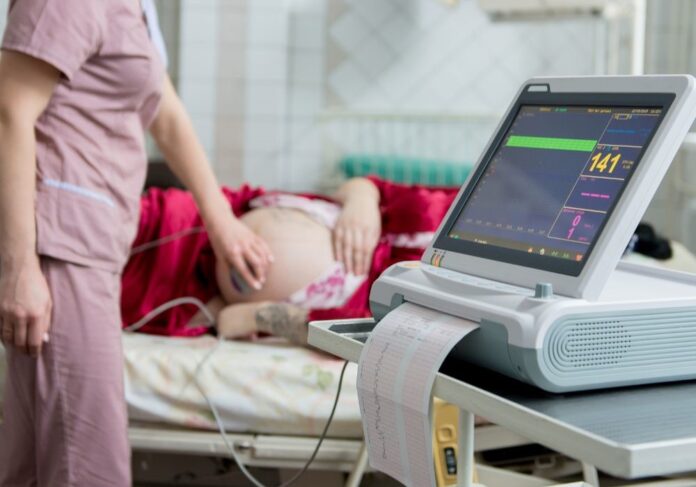Fetal heart monitoring should not cause worry but rather give patients peace of mind about their pregnancy. Understand the importance of monitoring until birth.
Fetal heart monitoring is a procedure that uses ultrasound to assess the condition of the fetus and its wellbeing. If you have spent time around obstetrics, you may have heard a doctor mention fetal heart monitoring. Professionals require high-end devices that produce clear, quality results. It’s important to understand the importance of fetal heart monitoring, why it is useful, and how it can help indicate a potential emergency.
Assess the Unborn Baby
An ultrasound allows for a more detailed data collection on the fetus’ wellbeing. However, it cannot collect information about the baby’s heart rate continuously. Therefore, it is used alongside doppler testing.
Fluctuations in heart rate are normal and don’t automatically indicate that your baby is in distress. Many doctors and midwives prefer waterproof dopplers to detect fetal distress because it has a reputation for providing high-quality output showing any abnormalities in the heart rate.
Mothers are either periodically monitored with a handheld device or they are connected for continual monitoring of the baby’s heart rate during delivery. It’s important to know quickly if the baby is in distress. Fetal heart rate is a clear sign that the baby’s health is in trouble.
Monitoring Moms
Monitoring is performed by placing a monitor on your abdomen or over your womb. An external device picks up sound waves produced by the baby’s heart and sends them through wires to a machine that converts them into sounds in which doctors can hear the baby’s heartbeat.
The doctor may ask you to breathe deeply or cough while they listen for certain sounds, making it easier for them to hear those noises and watch how they change over time. They will also be able to tell if there are any problems with their breathing patterns or heart rate.
The key takeaway of this article is that fetal heart monitoring is important during pregnancy as well as delivery. It will help you identify potential problems early on so they can be treated before they become serious.
Vital Data
Most fetal heart abnormalities are not detected until after 20 weeks of pregnancy, but monitoring begins as early as 12 weeks in many cases.
A regular fetal heart rate is between 110 and 160 beats per minute. If an abnormal heart rate or rhythm is detected, a health care professional will try to find the cause and take the necessary steps to rectify the situation.
Fetal heart monitoring is highly important because its findings can be as simple as changing the position to increase oxygen flow, and other times, it can indicate serious health issues. Monitoring fetal heart rates gives us a glimpse into the world of the womb and allows us to react if needed.
Read Also
- The Benefits of Contract Labor Staffing in Healthcare
 The most successful healthcare facilities today aren’t just reacting to crises—they are building workforce resilience to withstand them. Unpredictable patient demand, coupled with persistent nursing shortages, has made the traditional staffing model obsolete. Relying on mandatory overtime to cover a sudden surge in capacity is a recipe for high turnover and rising employee burnout relief… Read more: The Benefits of Contract Labor Staffing in Healthcare
The most successful healthcare facilities today aren’t just reacting to crises—they are building workforce resilience to withstand them. Unpredictable patient demand, coupled with persistent nursing shortages, has made the traditional staffing model obsolete. Relying on mandatory overtime to cover a sudden surge in capacity is a recipe for high turnover and rising employee burnout relief… Read more: The Benefits of Contract Labor Staffing in Healthcare - Why the Keto Diet Works for Some People—and Fails Dramatically for Others: An Ayurvedic Breakdown for Modern Healthcare
 The keto diet has dominated weight-loss culture for years. For some people, it produces rapid fat loss, stable energy, and improved mental clarity. For others—especially those who gain weight easily—it leads to burnout, digestive distress, rebound weight gain, high cholesterol, and a metabolism that feels slower than before. Healthcare often frames this as a discipline… Read more: Why the Keto Diet Works for Some People—and Fails Dramatically for Others: An Ayurvedic Breakdown for Modern Healthcare
The keto diet has dominated weight-loss culture for years. For some people, it produces rapid fat loss, stable energy, and improved mental clarity. For others—especially those who gain weight easily—it leads to burnout, digestive distress, rebound weight gain, high cholesterol, and a metabolism that feels slower than before. Healthcare often frames this as a discipline… Read more: Why the Keto Diet Works for Some People—and Fails Dramatically for Others: An Ayurvedic Breakdown for Modern Healthcare - How to Choose the Best Assisted Living Facility for Seniors
 Are you looking for the right assisted living facility for a senior loved one? Choosing a place can feel overwhelming. There are many factors to consider, from care services to the environment. Safety, comfort, and social opportunities play important roles in daily life. Each senior has unique needs and preferences that must be met. Understanding… Read more: How to Choose the Best Assisted Living Facility for Seniors
Are you looking for the right assisted living facility for a senior loved one? Choosing a place can feel overwhelming. There are many factors to consider, from care services to the environment. Safety, comfort, and social opportunities play important roles in daily life. Each senior has unique needs and preferences that must be met. Understanding… Read more: How to Choose the Best Assisted Living Facility for Seniors - Burn Smart, Not Hard; Shape Burn: Clean Protein for Weight Management
 You want to feel light, strong, and confident. You don’t want crash diets or fake promises. You need a plan that works with your body, not against it. That’s where Shape Burn comes in. You can burn fat without losing strength. You can eat better and stay full. You can manage weight in a way… Read more: Burn Smart, Not Hard; Shape Burn: Clean Protein for Weight Management
You want to feel light, strong, and confident. You don’t want crash diets or fake promises. You need a plan that works with your body, not against it. That’s where Shape Burn comes in. You can burn fat without losing strength. You can eat better and stay full. You can manage weight in a way… Read more: Burn Smart, Not Hard; Shape Burn: Clean Protein for Weight Management - Creatine Basics: How Much Is 5g, How Much Water You Need, and Whether Pills or Powder Work Better
 If you’ve ever walked into a supplement aisle or scrolled through fitness TikTok, you’ve probably seen people talking about creatine — usually with a shaker bottle in hand and promises of better workouts and faster gains. And honestly? They’re not wrong. Creatine is one of the most researched and effective supplements for muscle strength, recovery,… Read more: Creatine Basics: How Much Is 5g, How Much Water You Need, and Whether Pills or Powder Work Better
If you’ve ever walked into a supplement aisle or scrolled through fitness TikTok, you’ve probably seen people talking about creatine — usually with a shaker bottle in hand and promises of better workouts and faster gains. And honestly? They’re not wrong. Creatine is one of the most researched and effective supplements for muscle strength, recovery,… Read more: Creatine Basics: How Much Is 5g, How Much Water You Need, and Whether Pills or Powder Work Better - Understanding Breast Cancer in Men: Key Facts and Symptoms
 Breast cancer is often thought of as a disease that only affects women. However, men can develop it too. Although it is less common, early detection and awareness are important. Read on to learn key facts, symptoms, and ways men can take action to protect their health. How Common Is Breast Cancer in Men? Breast… Read more: Understanding Breast Cancer in Men: Key Facts and Symptoms
Breast cancer is often thought of as a disease that only affects women. However, men can develop it too. Although it is less common, early detection and awareness are important. Read on to learn key facts, symptoms, and ways men can take action to protect their health. How Common Is Breast Cancer in Men? Breast… Read more: Understanding Breast Cancer in Men: Key Facts and Symptoms - Raising Awareness: Breast Cancer Facts for Older Men
 Breast cancer does not affect only women, and many older men do not realize they are at risk. Because the signs can be easy to miss, many men learn about the disease only when it has progressed. Learning the basic facts now can help you stay aware and respond early. If you want to protect… Read more: Raising Awareness: Breast Cancer Facts for Older Men
Breast cancer does not affect only women, and many older men do not realize they are at risk. Because the signs can be easy to miss, many men learn about the disease only when it has progressed. Learning the basic facts now can help you stay aware and respond early. If you want to protect… Read more: Raising Awareness: Breast Cancer Facts for Older Men - How Regular Exercise Transforms Senior Living for the Better
 Getting older is something everyone experiences, but how we age can be greatly influenced by the choices we make. One of the best ways for seniors to stay healthy, happy, and independent is through regular exercise. Staying active isn’t just about fitness-it can improve nearly every part of life. From building strength and energy to… Read more: How Regular Exercise Transforms Senior Living for the Better
Getting older is something everyone experiences, but how we age can be greatly influenced by the choices we make. One of the best ways for seniors to stay healthy, happy, and independent is through regular exercise. Staying active isn’t just about fitness-it can improve nearly every part of life. From building strength and energy to… Read more: How Regular Exercise Transforms Senior Living for the Better









